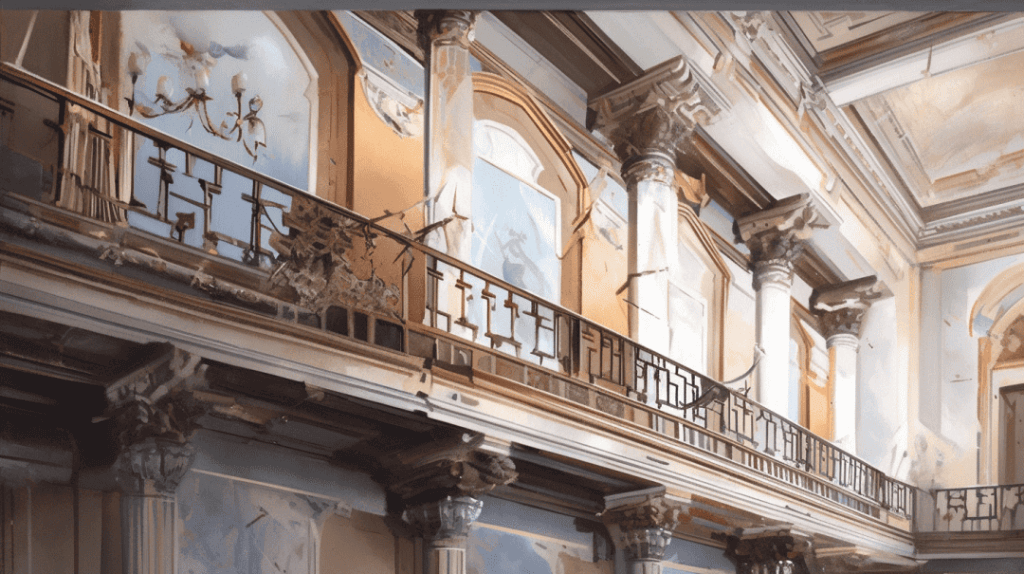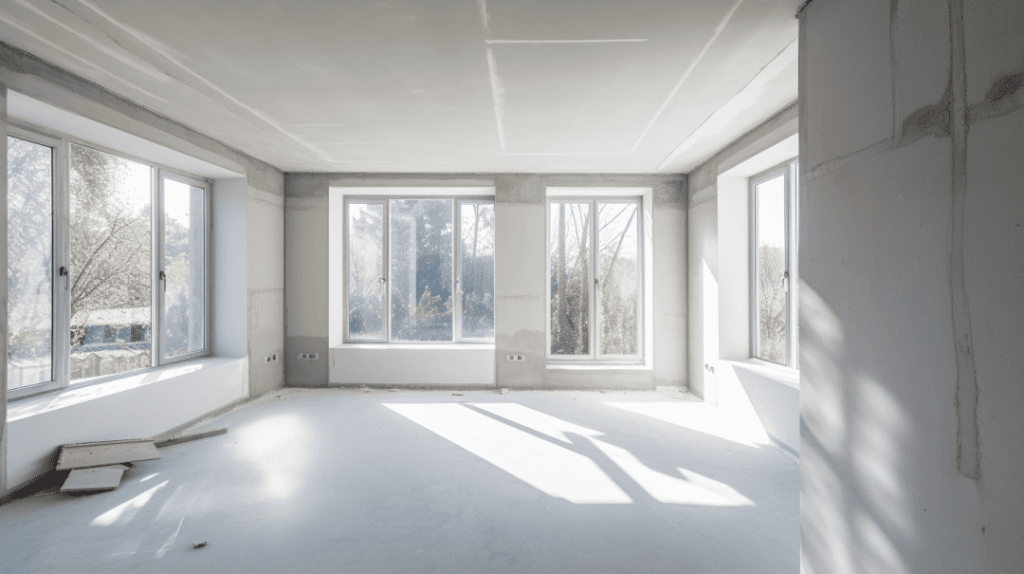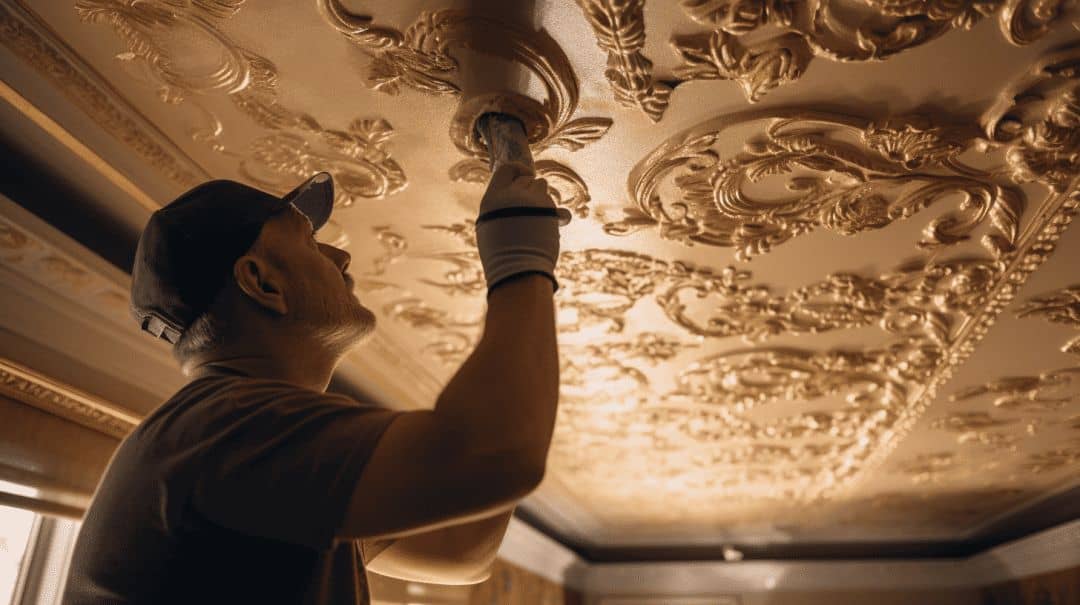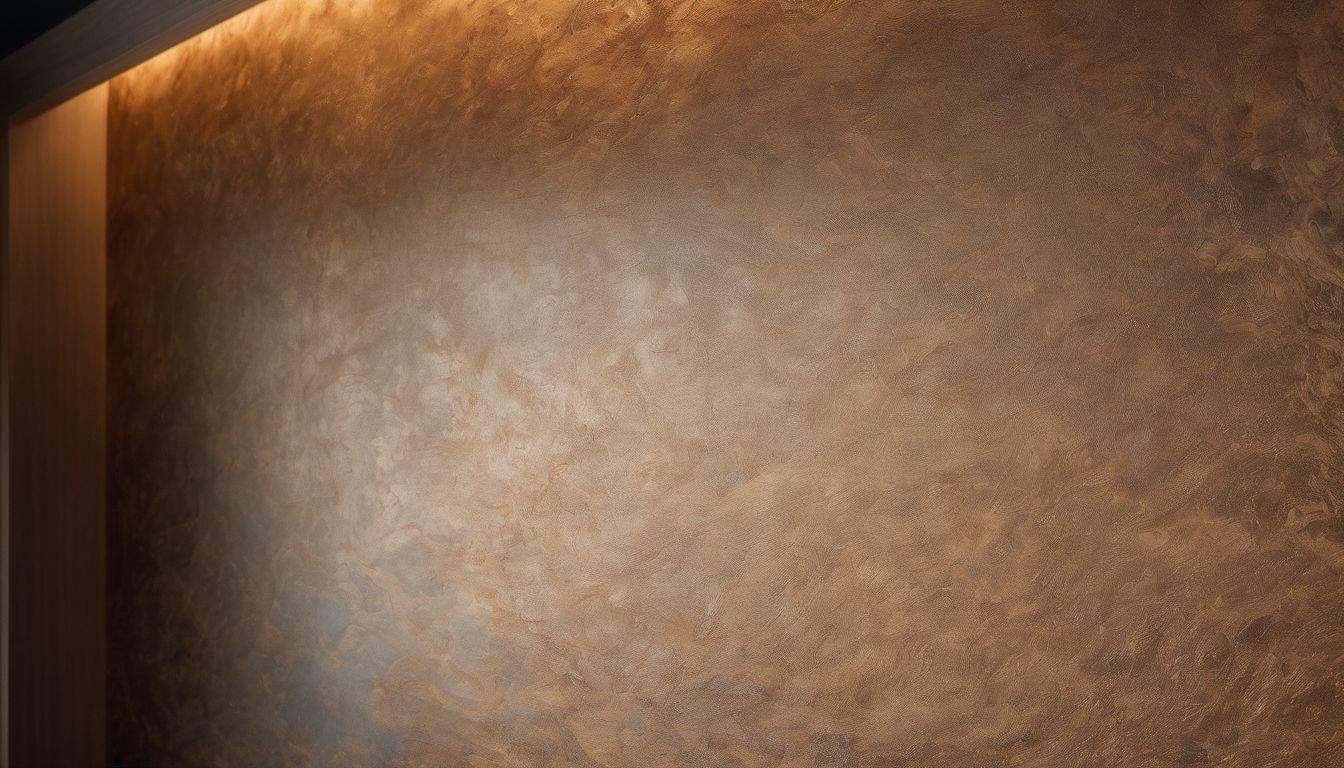Securing the Longevity and Aesthetics of Your Home with Expert Plaster Care
Key Takeaway:
- Proper interior plastering and repair is crucial for maintaining the structural integrity and aesthetics of a building. It helps to prevent damage, such as cracks and water infiltration, which can lead to costly repairs in the future.
- Understanding the principles of interior plastering, such as the role of gypsum in the curing and drying process, and the differences between lime and gypsum plaster, enables builders and contractors to choose the most suitable materials and techniques for a given project.
- Lath plays a significant role in interior plastering by holding the plaster in place and providing a stable base for its application. Different types of lath found on historic buildings have specific characteristics and considerations that need to be taken into account during repair and restoration projects.
- Several factors impact the durability of interior plaster, including structural considerations, poor workmanship, and mistakes in plaster application techniques. Properly proportioned mixes, compatibility between base coats and finish coats, and adequate plaster thickness are essential for achieving a long-lasting and high-quality plaster finish.
Importance of Proper Interior Plastering and Repair
Proper Interior Plastering and Repair: A Crucial Aspect of Maintaining a Structurally Sound Interior

Interior plastering and repair play a significant role in ensuring the integrity and aesthetic appeal of any interior space. Expertly executed plastering and timely repairs are crucial to maintaining the structural stability and overall durability of a building. As a fundamental part of interior construction, ensuring the importance of proper interior plastering and repair cannot be overstated.
With attention to detail and skilled craftsmanship, proper interior plastering creates a smooth and even surface, enhancing the appearance of walls and ceilings. It serves as a protective layer that shields the underlying structure from moisture and external elements, preventing damage and deterioration. Additionally, it provides a level of insulation, contributing to the energy efficiency of a building.
Regular maintenance and repair of interior plaster are equally vital to preserving the structural integrity of a space. Over time, cracks, delamination, or bulging may occur due to factors such as settling, temperature fluctuations, or moisture infiltration. Swiftly addressing these issues through professional repair not only enhances the visual appeal but also curtails further damage or potential hazards.
To ensure the importance of proper interior plastering and repair, several suggestions can be followed. Firstly, it is essential to engage experienced professionals who possess the required knowledge and expertise in handling plastering and repairs. Additionally, regular inspections can help detect and address minor issues promptly before they escalate into significant problems. Furthermore, using high-quality materials and techniques will enhance the durability and longevity of the plaster. Employing appropriate ventilation systems in moisture-prone areas can also help prevent future damages. By adhering to these suggestions, the structural integrity of the interior can be preserved, minimizing the need for extensive repairs and saving costs in the long run.
Understanding the Principles of Interior Plastering
When it comes to interior plastering, understanding the principles behind it is crucial. In this section, we will delve into the fundamental aspects that shape the process. First, we’ll explore the role of gypsum in the curing and drying process. Gypsum, a widely used material in the construction industry, plays a significant role in achieving a sturdy and durable plaster finish. Next, we’ll uncover the differences between lime and gypsum plaster, highlighting their distinct characteristics and applications. Lastly, we’ll shed light on why gypsum plaster requires protection from water, uncovering the potential consequences of exposure. So, let’s dive in and explore the fascinating world of interior plastering principles.The Role of Gypsum in the Curing and Drying Process
Gypsum plays a crucial role in the curing and drying process of interior plaster. It acts as a binder, helping to solidify and strengthen the plaster mixture. Gypsum also has the unique property of being able to absorb moisture from the surrounding environment, which aids in the drying process. This is particularly important as it helps to prevent shrinkage and cracking of the plaster surface.
In addition, gypsum provides a smooth and even finish to the plaster, making it easier for subsequent layers to adhere properly. It also helps to improve the workability of the plaster mixture, allowing for easy application and shaping.
The presence of gypsum in the plaster mixture also enhances its fire resistance properties. Gypsum is inherently non-combustible and acts as a barrier against the spread of flames in case of a fire.
Furthermore, gypsum is known for its ability to regulate indoor humidity levels. It absorbs excess moisture from the air when humidity is high and releases it back into the environment when humidity is low, creating a more comfortable living space.
With its various beneficial properties, gypsum plays an essential role in ensuring proper curing and drying of interior plaster, resulting in a durable and long-lasting finish.
According to “The Importance of Proper Interior Plastering and Repair,” gypsum’s role in the curing and drying process is crucial for achieving a durable finish. Lime or gypsum plaster? Choosing your enemy in the battle against saggy walls.
Differences Between Lime and Gypsum Plaster
Lime and gypsum plaster differ in several aspects. A comparison of their properties and characteristics can help us understand the distinctions between them.
| Lime Plaster | Gypsum Plaster |
|---|---|
| Made from lime, sand, and water | Made from gypsum, sand, and water |
| More breathable and flexible | Less breathable and rigid |
| Allows moisture to evaporate easily | Absorbs moisture but can become damaged if exposed to excessive water |
| Slow curing process, requires more time for drying | Fast curing process, dries rapidly |
Apart from these differences, it is worth noting that lime plaster has been used for centuries due to its durability and natural composition. On the other hand, gypsum plaster is widely used today because of its quick setting time and ease of application.
Lath in interior plastering has an important role in holding the plaster in place. Specifically, different types of lath are found on historic buildings, such as wood lath or metal lath. Challenges related to lath installation or deterioration can impact the overall quality of the plaster surface.
Understanding these key factors affecting the durability of interior plaster is crucial. The structural considerations during construction can influence how well the plaster withstands forces over time. Proper workmanship plays a significant role as well – using well-proportioned mixes, ensuring compatibility between base coats and finish coats, avoiding mistakes in application techniques, and not overusing retarding agents are all essential practices that contribute to long-lasting plaster surfaces.
Additionally, maintaining adequate plaster thickness is vital for its integrity. Thin layers may lead to cracking or failing whereas sufficient thickness ensures stability.
According to the reference data “Importance of Proper Interior Plastering and Repair,” it is critical to protect gypsum plaster from excessive exposure to water as it can lead to damage.
Water may be essential for life, but it’s the mortal enemy of gypsum plaster – it’s like a supervillain plotting to ruin your beautifully plastered interior.
Why Gypsum Plaster Needs Protection from Water
Gypsum plaster, like any other plaster material, requires protection from water to maintain its integrity and durability. Water can cause gypsum to soften and lose its strength, leading to cracking, peeling, or crumbling of the plaster over time. Moisture from water can also promote the growth of mold and mildew on the plaster surface. To prevent such issues, it is crucial to ensure that gypsum plaster is properly protected from water infiltration.
There are several reasons why gypsum plaster needs protection from water. 1. gypsum is a hygroscopic material, meaning it naturally absorbs moisture from the surrounding environment. When exposed to excessive moisture or prolonged contact with water, gypsum can absorb and retain this moisture, leading to swelling and deformation of the plaster. This can result in a compromised structural integrity of the plastered surface.
Furthermore, water can also cause chemical reactions within the gypsum material itself. Gypsum contains chemically-bound water molecules that play a crucial role in its curing and drying process. Excessive exposure to water can disrupt these chemical bonds, causing the plaster to lose its strength and become more susceptible to damage.
In addition to its vulnerability to water damage, gypsum plaster is also prone to efflorescence when exposed to moisture. Efflorescence refers to the migration of salts in water through porous materials such as plaster. When these salts come into contact with air on the surface of the plaster, they crystallize and form unsightly white deposits. These deposits not only detract from the aesthetic appeal but can also weaken the plaster over time.
To protect gypsum plaster from water damage, various measures need to be taken during installation and maintenance. Applying waterproof coatings or sealants on the surface of the plaster can create a barrier that prevents water penetration. Proper drainage systems should be in place to redirect rainwater or other sources of moisture away from exterior walls containing interior gypsum plasters.

In historical buildings where traditional lime-based plasters were used instead of gypsum, the issue of water damage was also a significant concern. Lime plasters are more resilient to water than gypsum but still require protection from excessive moisture. Preservation efforts in such buildings often involve repairs and maintenance of the lath and plaster system to ensure its longevity and resistance against water-related deterioration.
Don’t underestimate the power of lath – it’s like the unsung hero that holds your plaster together, kind of like a supportive mother-in-law.
The Significance of Lath in Interior Plastering
When it comes to interior plastering, one crucial element that plays a significant role is lath. Lath, found on historic buildings, acts as the backbone of plaster, holding it securely in place. Understanding the different types of lath used in this process is key to comprehending the durability and authenticity of an interior plaster finish. Moreover, being aware of common issues with lath and their subsequent impact on the plaster can help identify potential problems and undertake timely repairs. So, let’s dive into the world of lath and explore its vital significance in interior plastering.
Types of Lath Found on Historic Buildings
Historic buildings often feature various types of lath that play a significant role in interior plastering. Here, we will discuss the different types of lath found in these buildings.
– Metal Lath: This type of lath comprises metal sheets with dimples or ridges that provide a key for the plaster to adhere to. Metal lath is commonly used in areas where moisture may be present, such as bathrooms and kitchens. – Wood Lath: Wooden strips nailed to the stud framing constitute wood lath. Traditionally, wood lath was made from thin strips of wood, usually 1/8 inch thick and 2-3 inches wide. Wood lath is known for its flexibility and ability to accommodate slight shifts in the building’s structure. – Expanded Metal Lath: Composed of expanded metal sheets, this type of lath has diamond-shaped openings that enhance the adhesion of plaster. Expanded metal lath is ideal for covering large areas quickly due to its availability in large rolls. – Plasterboard Lath: Also known as gypsum board or drywall, plasterboard consists of paper-wrapped gypsum panels. It offers a smooth surface for applying plaster finish coats directly without the need for traditional wet plaster base coats. Unique details not covered above include intricately detailed wooden laths used in decorative plasters found on historic ceilings and walls. These ornamental designs add elegance and character to historic buildings, showcasing craftsmanship from bygone eras. Discovering the diverse range of laths found in historic buildings provides insight into the construction methods employed during different periods. Understanding these variations helps ensure accurate restoration and preservation efforts while maintaining historical integrity. Don’t miss out on exploring the fascinating world of types of lath found on historic buildings and unlocking a treasure trove of architectural heritage! The lath, like a supportive partner, holds the plaster in place, ensuring it doesn’t make a messy break for freedom.The Role of Lath in Holding Plaster in Place
Lath plays a crucial role in securing plaster firmly in its place. It provides a supportive structure that allows the plaster to adhere and maintain its integrity over time. Various types of lath can be found on historic buildings, each serving the purpose of holding the plaster in place. Common issues with lath, such as deterioration or damage, can have a significant impact on the overall quality and durability of the plaster. Therefore, it is essential to ensure that the lath is in good condition before applying the plaster.
Apart from providing support, lath also helps distribute the weight and stress evenly across the surface of the plaster. This prevents cracks and ensures a smooth and seamless finish. The chosen type of lath should be compatible with the specific type of plaster being used to achieve optimal results.
In addition to supporting and distributing weight, proper installation techniques are crucial for maintaining a strong bond between the lath and plaster. Mistakes in application methods or using an inadequate amount of plaster can lead to weak spots or detachment from the lath.
A true story illustrates the importance of lath in holding plaster in place: In a historic building renovation project, neglecting to address deteriorating lath resulted in several areas where the newly applied plaster started to crack and break away. This led to additional time and expense as re-plastering had to be done on those sections. By recognizing and prioritizing proper maintenance and repair of lath, these issues could have been prevented, ensuring a long-lasting and visually appealing interior for years to come.
Unlucky lath: The unsung hero holding your plaster together, or falling apart.
Common Issues with Lath and Their Impact on Plaster
Lath-related problems can have a significant impact on the quality of plaster. The issues regarding lath and their effects on plaster are worth understanding. These problems can deteriorate the overall durability of the interior plaster, causing structural concerns and potential damage to the building.
One common issue with lath is its deterioration over time, which weakens its ability to hold plaster in place. This can lead to cracks, bulges or even complete failure of the plaster. Another problem is incorrect installation or spacing of lath, resulting in uneven plaster thickness and an unstable surface. Additionally, if incompatible materials are used for lath and plaster, such as different expansion rates or moisture absorption properties, it can cause delamination and separation between layers.
Furthermore, improper maintenance or exposure to water can also impact both lath and plaster. Moisture infiltration through damaged or poorly protected lath can result in rotting or corrosion of the underlying structure. In turn, this compromises the integrity of the entire plaster system.
To ensure the longevity and effectiveness of interior plastering, addressing these common issues with lath is crucial. Proper installation techniques, regular inspections for maintenance needs, and appropriate protective measures against water infiltration should be employed.
By prioritizing these considerations and taking proactive steps in addressing any identified problems with lath early on, one can avoid costly repairs down the line. Preserving the integrity of both the lath and plaster will contribute significantly to a durable and aesthetically pleasing interior finish. Don’t miss out on ensuring your interior walls stand strong for years to come!
If you want your interior plaster to last longer, make sure you avoid poor workmanship and excessive use of retarding agents.
Factors that Impact the Durability of Interior Plaster

When it comes to the durability of interior plaster, there are several factors that play a crucial role. Understanding these factors is essential to ensure proper plastering and repair. In this section, I will delve into two key aspects that impact the longevity of interior plaster. First, we will explore the significance of structural considerations and how they can directly affect the quality of the plaster. Then, we will discuss the detrimental effects of poor workmanship on the overall durability of the plaster. By examining these elements, we can gain valuable insights into maintaining a long-lasting and robust interior plastering system.
Structural Considerations and Their Effect on Plaster
Structural considerations play a crucial role in influencing the quality and durability of interior plaster. The stability and strength of the underlying structure directly impact the performance of plaster. Any deficiencies or weaknesses in the structure can lead to cracks, bulges, and other issues in the plaster surface. Therefore, it is essential to address any structural concerns before applying plaster to ensure its long-term stability. The structural considerations primarily include factors such as the integrity of the lath, proper framing techniques, and adequate support for the plaster material. The lath provides a framework that holds the plaster in place and allows it to adhere securely. If the lath is not properly installed or maintained, it can result in uneven curing and drying of plaster and compromise its overall integrity. Furthermore, poor framing techniques can lead to improper distribution of loads on the walls, causing stress on the plaster surface. This stress can manifest as cracks or bulges over time if not addressed effectively during construction or renovation. Additionally, sufficient support for the weight of the plaster is crucial to prevent sagging or separation from the underlying surface. Inadequate support can result in detachment of layers or complete failure of the plaster system. By considering these structural aspects during interior plastering, builders can ensure a solid foundation for high-quality finishes that are resistant to common issues like cracking and bulging. It is worth noting that these structural considerations are drawn from ‘Understanding The Principles Of Interior Plastering‘ article. Bad plastering can turn your walls into a crumbling mess faster than a game of Jenga played by drunk toddlers.How Poor Workmanship Affects Plaster Quality
Poor workmanship has a significant impact on the quality of plaster. The manner in which plaster is applied, including the proportioning of mixes and the application technique, plays a crucial role in determining the durability and longevity of the finished product. Inadequate plaster thickness and excessive use of retarding agents can also compromise the quality of plaster. Furthermore, compatibility issues between base coats and finish coats contribute to poor workmanship and ultimately affect the overall quality of interior plaster.
Additionally, poor workmanship can result in structural considerations that negatively impact plaster quality. Structural defects such as uneven surfaces or cracks can weaken the plaster, leading to potential damage over time. Mistakes in plaster application techniques, such as insufficient curing or improper drying processes, can also compromise the strength and integrity of the plaster.
Moreover, it is important to note that inadequate workmanship affects not only new plaster installations but also repairs to existing ones. When poorly executed repairs are made without proper attention to detail and craftsmanship, they can result in inconsistent textures or color variations that detract from the overall appearance of a space.
It is essential for professionals involved in interior plastering to prioritize skilled workmanship and adhere to best practices. By consistently employing proper techniques and ensuring attention to detail throughout each step of the process, it is possible to achieve high-quality results that are both aesthetically pleasing and durable.
Understanding the Principles of Interior Plastering
Mix it well or the only thing plastered will be your reputation.
Importance of Properly Proportioned Mixes
Properly proportioned mixes are vital in interior plastering, ensuring the quality and durability of the plaster. The correct ratios of materials such as gypsum and lime play a crucial role in achieving the desired strength and consistency of the plaster mixture.
A well-proportioned mix helps prevent issues like cracking, shrinkage, and inadequate adhesion. It creates a homogeneous blend that ensures even curing and drying throughout the plaster. This results in a smooth and stable surface that is resistant to water damage, impacts, and other potential sources of deterioration.
Moreover, using properly proportioned mixes contributes to the overall structural integrity of the plaster system. It promotes better bond between layers, reducing the risk of delamination or separation over time. The right mix also enhances the workability of the plaster, making it easier to apply and spread evenly on various substrates.
However, achieving properly proportioned mixes requires careful attention to detail. Professionals should ensure accurate measurements, following recommended guidelines for specific types of plasters. They should also avoid excessive use of retarding agents or additives that can throw off the desired proportions.
To ensure proper mixing, it is advisable to batch small quantities at a time rather than attempting large quantities all at once. This allows for better control over proportions and reduces the chances of error. Regular monitoring during mixing ensures consistency throughout the process.
Mixing base coats with finish coats is like trying to pair jeans with a tuxedo – it’s a fashion disaster for your plaster.
Incompatibility Issues Between Base Coats and Finish Coats
Incompatibility between base coats and finish coats can cause significant issues in interior plastering. It is essential to understand the potential problems that may arise from using incompatible materials. For example, the incorrect combination of base coats and finish coats can lead to poor adhesion, cracking, or even delamination of the plaster surface.
To illustrate this issue further, let’s consider a table examining the potential incompatibility issues between different types of base coats and finish coats in interior plastering:
| Base Coat | Finish Coat | Potential Issues |
|---|---|---|
| Lime | Gypsum | Differential drying rates causing cracking or detachment |
| Gypsum | Cementitious | Inadequate bond strength leading to delamination |
| Gypsum | Lime | Uneven curing resulting in discoloration or shrinkage |
| Cementitious | Lime | Chemical reactions causing adhesion failure |
It is important to note that these are just a few examples, and there may be other combinations that can result in compatibility issues. Therefore, it is crucial to consult with professionals or follow manufacturer guidelines when selecting and applying base coats and finish coats to ensure compatibility.
In addition to the mentioned issues, another factor affecting the durability of interior plaster is proper workmanship. Using properly proportioned mixes, employing correct application techniques without excessive use of retarding agents, and achieving adequate plaster thickness are essential for long-lasting results.
To emphasize the significance of addressing incompatibility issues between base coats and finish coats, here’s a real-life scenario: A contractor applied a gypsum base coat followed by a cementitious finish coat without considering their compatibility. As a result, within months of completion, cracks began forming on the surface due to inadequate bond strength. This led to costly repairs as the entire plaster had to be removed and replaced with compatible materials.
By understanding and addressing potential incompatibility issues between base coats and finish coats, interior plastering can be executed with precision and ensure the longevity of the plaster surface.
Applying plaster like Picasso painted can lead to a disastrous masterpiece.
Mistakes in Plaster Application Techniques
Mistakes in plaster application techniques can have significant consequences on the quality of the final result. It is important to be aware of these common errors and take steps to avoid them.- Applying plaster too thickly or unevenly can lead to drying issues and a weakened bond between layers.
- Inadequate mixing of plaster materials can result in poor adhesion, leading to cracking and delamination.
- Improper timing in the application process can cause premature drying or curing, leading to shrinkage cracks.
- Inconsistent trowel technique can result in an uneven surface texture and an unprofessional appearance.
- Using excessive amounts of water during mixing or application can weaken the plaster and decrease its durability.
- Failing to properly cure or protect the plaster during the drying process can lead to moisture-related damage and deterioration over time.
Effects of Excessive Use of Retarding Agents

Retarding agents, when used excessively, can have detrimental effects on the interior plastering process. These agents are added to slow down the setting time of the plaster, allowing for better workability. However, an excessive amount of retarding agents can lead to prolonged drying times and weakened plaster bonds.
The effects of excessive use of retarding agents include a reduction in the overall strength and durability of the plaster. The extended drying time can also create a favorable environment for microbial growth, leading to mold and mildew issues. Furthermore, the weakened bonds between layers of plaster can result in cracking and crumbling over time.
It is important to carefully measure and regulate the amount of retarding agent used during the plastering process. The appropriate dosage ensures that the setting time is extended just enough to allow for proper application but not so much that it compromises the quality of the plaster.
In order to avoid these negative effects, it is crucial for plasterers to follow recommended guidelines and best practices when using retarding agents. Proper training and understanding of the materials being used are essential for achieving durable and long-lasting interior plaster surfaces.
Fact: Excessive use of retarding agents can weaken plaster bonds and increase drying times, leading to reduced durability. (Source: ‘Importance of Proper Interior Plastering and Repair’)
1. Can’t resist a good plaster pun? Neither can we, so let’s dive into the importance of proper interior plastering and repair.
2. When it comes to interior plastering, understanding the principles is key—so let’s dig deep into the role of gypsum, the differences between lime and gypsum plaster, and why gypsum plaster needs protection from water.
3. Lath may sound like something out of a medieval tale, but its significance in interior plastering is no joke—we’ll explore the types of lath found on historic buildings, the role it plays in holding plaster in place, and the common issues that can impact the overall plaster quality.
4. Buckle up, because we’re about to uncover the factors that impact the durability of interior plaster, including structural considerations, how poor workmanship affects quality, and the consequences of inadequate plaster thickness. Get ready for some plaster wisdom!
The Impact of Inadequate Plaster Thickness
Insufficient Plaster Thickness and its Consequences:
Insufficient plaster thickness can have significant repercussions on the overall durability and quality of interior plastering. This issue arises when the application of plaster is not done with proper care and attention, leading to a thinner layer than required.
Inadequate plaster thickness can compromise the structural integrity of the plaster system and result in various problems. 1. it weakens the protective barrier against moisture infiltration, making the plaster susceptible to water damage. Moreover, it reduces the overall strength and resilience of the plaster, making it more prone to cracking, chipping, and crumbling over time.
Additionally, insufficient plaster thickness can lead to poor adhesion between layers, causing delamination or separation of the different coats. This further exacerbates the vulnerability of the plaster system and increases the risk of long-term issues.
It is crucial to address this issue promptly by ensuring proper plaster application techniques, including using adequately proportioned mixes and avoiding excessive use of retarding agents. By maintaining an appropriate thickness during interior plastering and repair, one can enhance the longevity and performance of the plaster while preventing potential damage caused by inadequate protection against external elements.
Story: A historic building that underwent interior plaster repair without considering adequate thickness faced severe consequences years later. The thin layer of plaster could not withstand environmental stresses, resulting in extensive cracking and eventual detachment from the underlying lath. This led to costly repairs and restoration efforts that could have been avoided if proper attention was given to achieve optimal plaster thickness during the initial renovation process.
Understanding the Principles of Interior Plastering is as essential as finding the perfect balance between cheap and sturdy furniture – you don’t want it crumbling under pressure.
Some Facts About The Importance of Proper Interior Plastering and Repair:
- ✅ Gypsum plaster sets in minutes and completely dries in two to three weeks. (Source: Team Research)
- ✅ Lime plasters applied directly to masonry walls can withstand occasional moisture, while gypsum plaster needs protection from water. (Source: Team Research)
- ✅ Proper plastering techniques can prevent water damage to interior walls by creating a dead air space using furring strips. (Source: Team Research)
- ✅ Different types of aggregate, such as sand, perlite, pumice, or vermiculite, can be used depending on the desired finish and texture. (Source: Team Research)
- ✅ Inadequate thickness, poor materials, or improper application can lead to plaster cracking, detachment, or bowing. (Source: Team Research)





